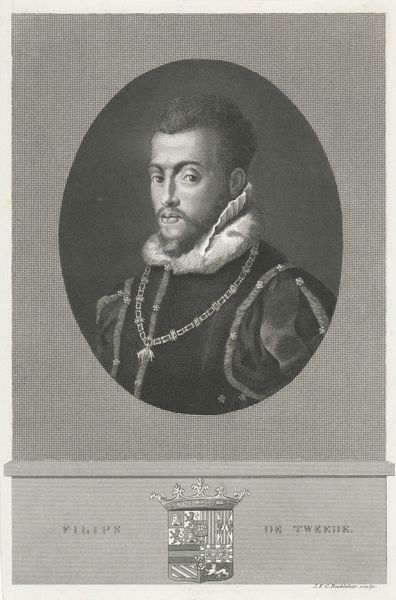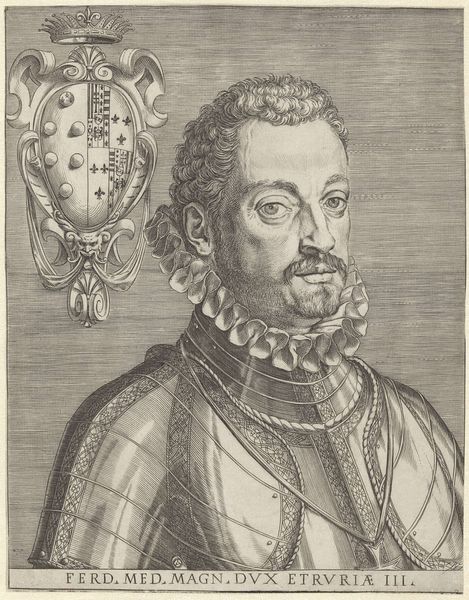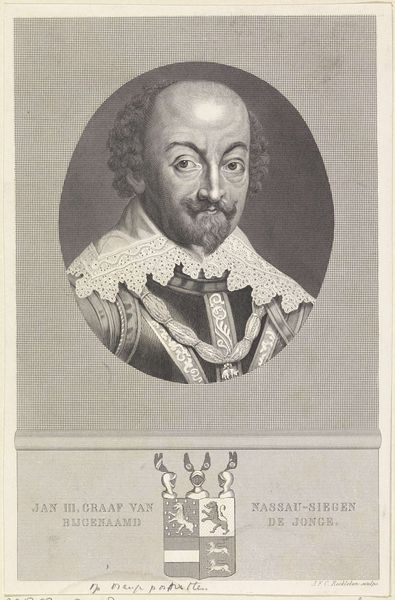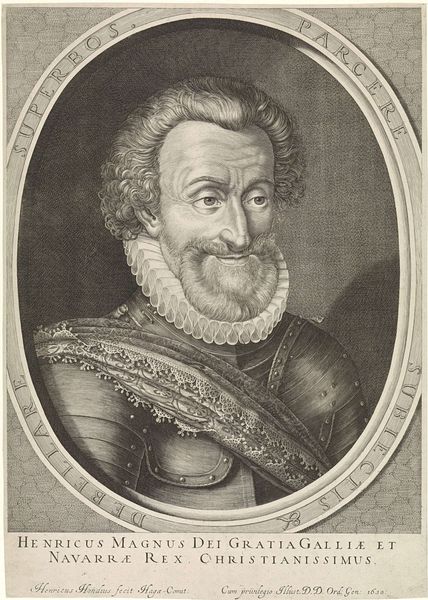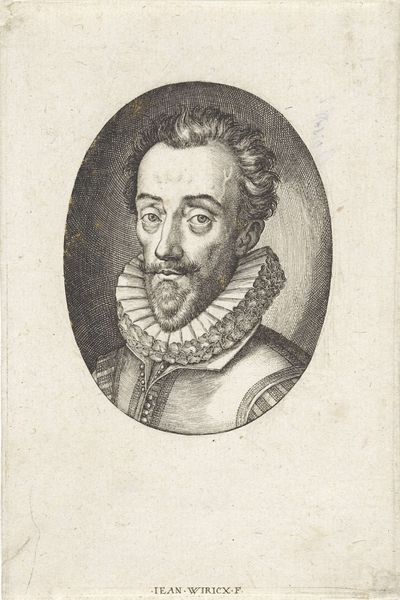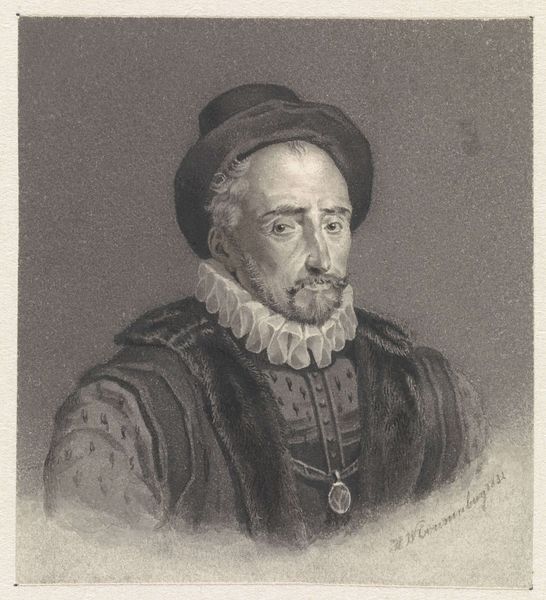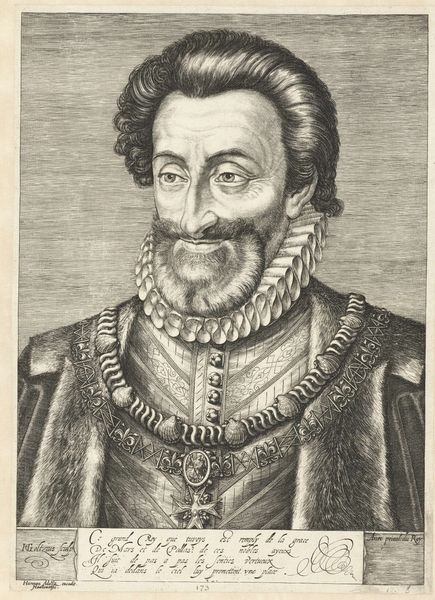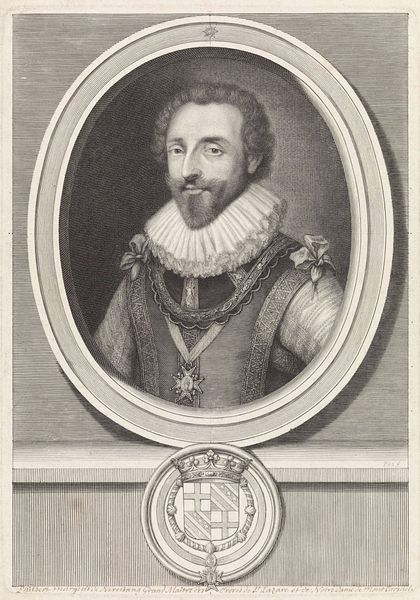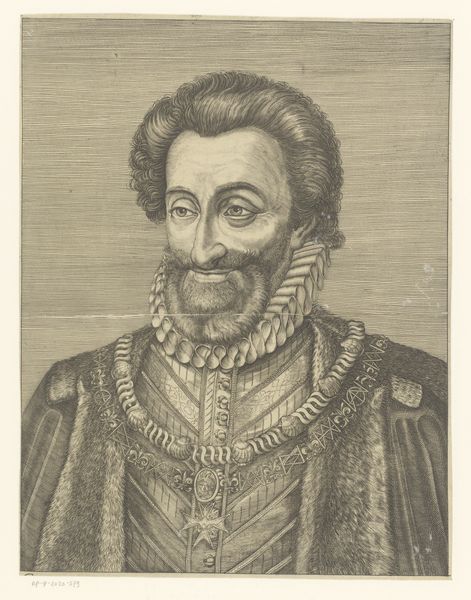
Dimensions: height 219 mm, width 161 mm
Copyright: Rijks Museum: Open Domain
Editor: Here we have "Portret van Filips III van Croÿ, hertog van Aarschot," an oil painting presumed to have been created sometime between 1850 and 1930. What strikes me is how... austere the figure looks, almost imposing. How do you interpret this work? Curator: I see this as a portrait steeped in power and privilege. We must consider the sitter, a Duke, and his representation through the lens of societal hierarchies. Notice the elaborate armor, the lace collar—they're not merely decorative. They visually reinforce his status within a rigid class system, right? Editor: Yes, the clothing and gear really portray that status and power... Curator: Exactly! Now, let's think critically about the act of portraiture itself within that context. Who had the power to commission and control their own image? What messages were they trying to convey, and to whom? Considering this wasn't painted until much later, we have to see how history reflects in art! Editor: So it's not just a representation of a person, but also a statement about power and historical narrative. I suppose I didn't initially look that deeply into it. Curator: Absolutely. Consider how this portrait perpetuates certain ideals while possibly silencing others. Whose stories aren't being told here? And how can we challenge that imbalance when engaging with historical artworks today? Editor: This really makes me see how a painting like this can hold more stories, questions, and conversations. Curator: I’m so glad! Because reflecting on these things makes viewing a piece so much more profound.
Comments
No comments
Be the first to comment and join the conversation on the ultimate creative platform.
